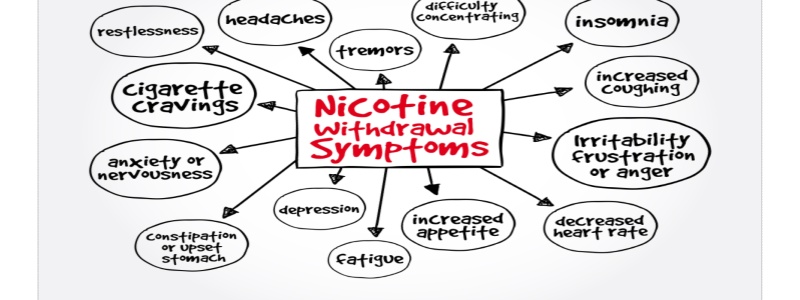Quitting smoking is a significant achievement that brings numerous health benefits. However, the process of quitting can be challenging due to nicotine withdrawal symptoms. Nicotine withdrawal occurs when your body craves nicotine after quitting smoking, leading to symptoms that can range from mild to intense. Understanding and effectively managing these withdrawal symptoms is crucial for successfully quitting smoking. Here are strategies and tips to help you overcome nicotine withdrawal:
Recognize Common Withdrawal Symptoms:
Nicotine withdrawal symptoms typically peak within the first few days after quitting and gradually improve over several weeks. Common symptoms include:
Intense Cravings: Cravings for nicotine may be strong, especially during situations or times of day when you used to smoke.
Irritability and Mood Swings: You may feel more irritable, anxious, or depressed than usual.
Difficulty Concentrating: Nicotine withdrawal can impair your ability to focus and concentrate on tasks.
Increased Appetite: Some people experience increased hunger or cravings for sweets after quitting smoking.
Insomnia or Sleep Disturbances: Difficulty falling asleep or staying asleep may occur during nicotine withdrawal.
Develop Coping Strategies:
Nicotine Replacement Therapy (NRT): Consider using NRT products such as nicotine patches, gum, lozenges, or inhalers. These products provide a controlled dose of nicotine to help reduce withdrawal symptoms while you work on breaking the habit of smoking.
Stay Busy and Distract Yourself: Engage in activities that keep your mind and hands occupied, such as exercise, hobbies, or reading. Physical activity can also help reduce cravings and improve mood.
Practice Relaxation Techniques: Deep breathing exercises, yoga, meditation, or progressive muscle relaxation can help reduce stress and manage cravings.
Stay Hydrated and Eat Healthily: Drink plenty of water throughout the day and eat regular, balanced meals. Healthy snacks like fruits, vegetables, and nuts can help satisfy oral cravings and stabilise blood sugar levels.
Get Support: Lean on friends, family, or a support group for encouragement and understanding. Talking to others who have quit smoking or are going through similar challenges can provide valuable insights and motivation.
Stay Positive and Motivated:
Focus on the Benefits: During challenging moments, remind yourself of the reasons why you decided to quit smoking. Whether it’s improving your health, saving money, or setting a positive example for loved ones, keep your motivations in mind.
Take it One Day at a Time: Nicotine withdrawal symptoms gradually improve over time. Celebrate small victories and milestones, such as completing a day without smoking or successfully managing a craving.
Prepare for Challenges: Anticipate situations or triggers that may tempt you to smoke and plan. Develop strategies for handling these situations without turning to cigarettes.
Seek Professional Help if Needed:
If nicotine withdrawal symptoms are severe or persistent, consider seeking guidance from a healthcare professional or a smoking cessation counsellor. They can provide personalised advice, recommend medications, or offer additional support to help you quit smoking successfully.
Nicotine withdrawal is a temporary challenge that accompanies the journey to becoming smoke-free. By understanding common withdrawal symptoms and implementing effective coping strategies, you can manage cravings, reduce discomfort, and increase your chances of successfully quitting smoking. Remember, each day without smoking brings you closer to enjoying the numerous health benefits of a smoke-free life.




